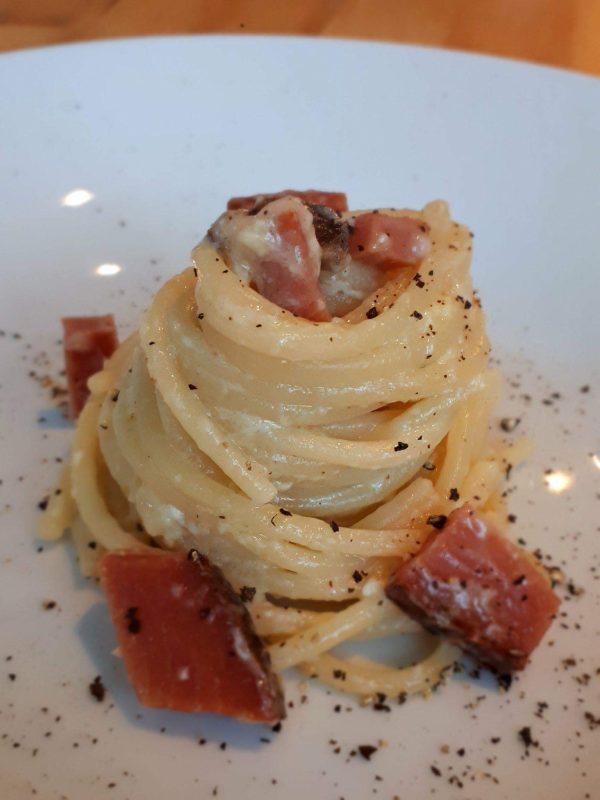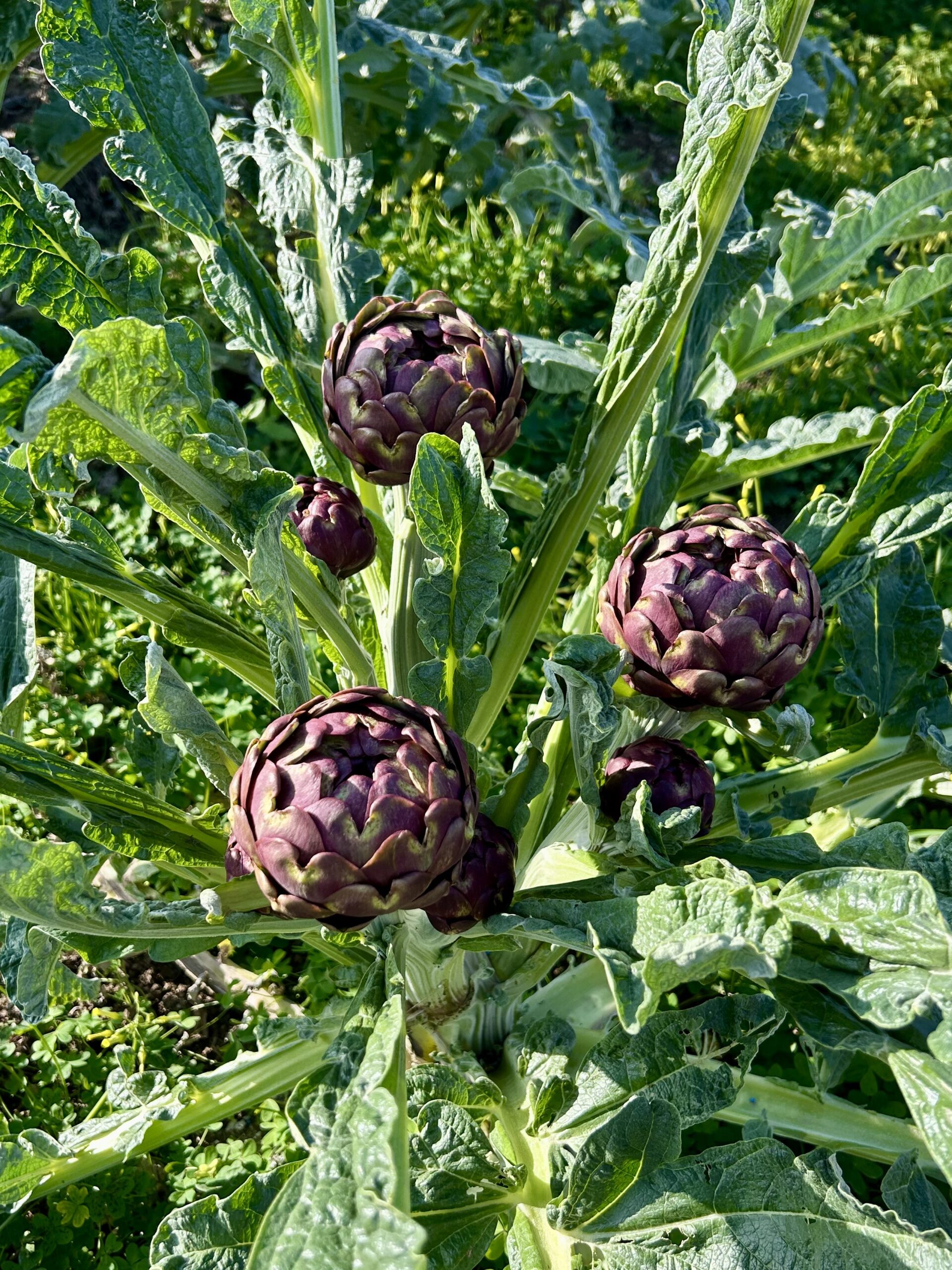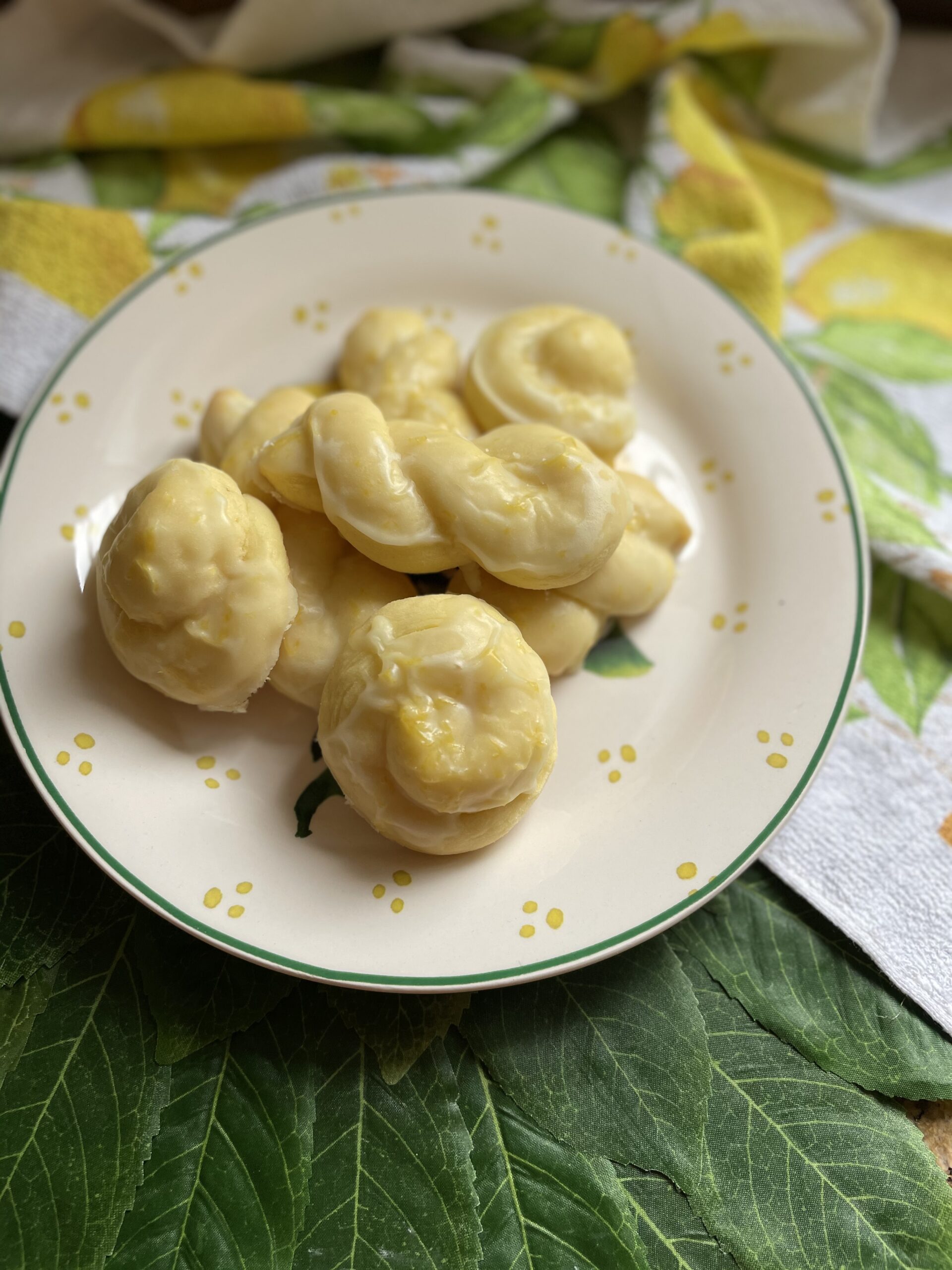Never mind cracking a few eggs to make an omelet, I’d paraphrase the old proverb, to say “you’ve got to crack a few eggs to make a carbonara”.
Eggs, cheese (Parmigiano or Pecorino Romano specifically), guanciale or pancetta and black pepper are the simple ingredients that make up one of the greatest spaghetti dishes in existence (at least in my humble opinion).
Pasta carbonara hails from Rome and dates back to the middle of the 20th century. It is traditionally made with spaghetti however, fettuccine, rigatoni, linguine, or bucatini can also be used. Carbonara seems to be one of the cousins in the Roman family circle of pastas that includes pasta alla gricia and caccio e pepe.
There are several theories on the carbonara’s origins beginning with one based on its derivative, carbonaro; Italian for charcoal burner. It is believed that this dish was first made as a hearty meal for Italian charcoal workers, hence it’s reference as the “coal miner’s spaghetti”. Carbonara which means in the style of coal miners is likely named as such because of the flecks of black pepper that seem to form a coal dust against the creamy eggs, cheese and pasta. There is also speculation that the recipe was developed to pay homage to the secret society of the 1800’s known as the Carbonari (the charcoal men) who played a part in the unification of Italy.
Another theory suggests that the term carbonara derives from the word carbonada, the word for bacon in central Italy’s dialect in reference to one of its main ingredients, the bacon, which first appeared in Rome in the 1940’s. After the allied liberation of Rome 1944, the rations distributed to starving Italians included large amounts of bacon and powdered eggs which inventive chefs combined with pasta and local cheese and cooked over communal charcoal braziers. The dish was revered not only by the Italians but the American soldiers as well who would later bring home with them the recipe and popularize it in the US.
If you’ve never had spaghetti alla carbonara, it is a luscious and creamy pasta dish made such by the eggs (there is absolutely no cream used in a proper carbonara). The silkiness of the strands is punctuated with pops of salt from both the cheese and the guanciale (or pancetta or bacon) and specks of peppered coal.
Preparation of spaghetti carbonara involves cooking the pasta in salted boiling water. The guanciale is fried slightly to render down some of its flavorful fat while a mixture of raw eggs, grated pecorino and ground black pepper is combined with the hot pasta away from direct heat to avoid curdling the egg (this can be done in the pasta pot or in a separate dish). The fried guanciale is added, and the mixture is tossed, creating a creamy sauce. It is then served to enjoy immediately.
While it’s origins may remain uncertain, one certainty remains, carbonara is a pasta dish that’s all it’s cracked up to be. Buon Appetito!
**Pasta prepared and photographed by Vito Bruno







